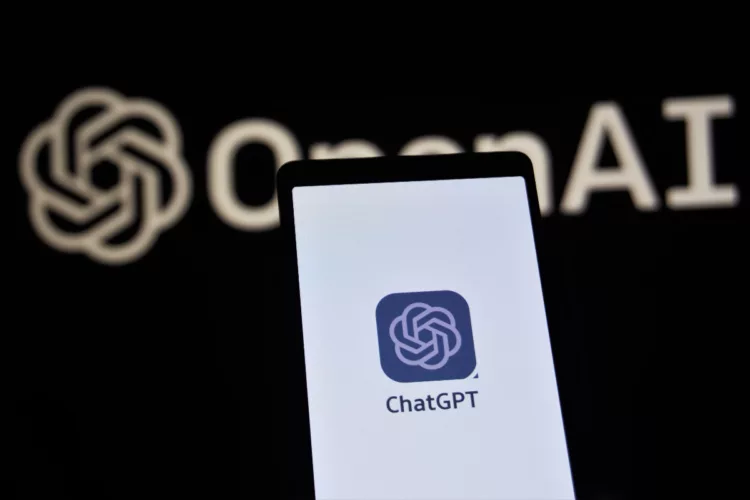AI for Business and the Future of HR – Threat or Opportunity?

With the news full of doom-laden stories about the threat of Artificial Intelligence (AI), we look below at the likely reality of what AI could mean for business in general and HR in particular.
Whilst ChatGPT promises to be a friend for HR professionals, enabling them to streamline processes, enhance communication, and create more engaging experiences, it is not to be taken at face value and accepted as gospel.
In fact, we asked ChatGPT to create a blog for HR professionals about using AI and it produced an entire blog in less than 30 seconds. Needless to say, we decided to write this one ourselves!
What is AI?
AI is a general term used to describe technology systems that in effect act like humans, allowing the computers to undertake work that previously would have required human intelligence. It is transforming the way we work and the way we interact with companies both as employees and customers.
AI HR
From an HR perspective, AI for HR has far-reaching opportunities to create a partially virtual human resources service, freeing up the time of HR professionals and leaders to focus on other important activities. When these benefits are combined there is an exciting opportunity to improve employee experience, which in turn will impact business performance.
HR expert Josh Bersin wrote recently that “AI (and generative AI in particular) is going to radically change the HR Tech landscape”. Real-life application of this includes using Chatbots to filter employee and manager queries, shortlist job applications, and support the performance management process, learning and development activity and more.
Why should we be using AI in HR?
Existing AI technology can already undertake many tasks traditionally done by administrators in many sectors. For example, AI can draft documents from scratch, provide summaries of complex information and even provide accurate translations. This ability to generate text is known as ‘Generative AI’. The key benefit is the speed with which AI can undertake these tasks, so the possibilities for saving time on admin are huge, enabling HR professionals and other employees to improve their productivity and freeing up time to concentrate on more strategic activity.
Reports suggest, however, that employers are not making the most of the opportunities available to them via artificial intelligence. A recent report in TAliNT International magazine suggested that employees could regain a significant number of working hours through the effective use of AI.
How far have UK businesses adopted AI to date?
A UK Government study published in January 2022 found that 15% of UK businesses were using some form of AI. Unsurprisingly, the IT and tech sector is among the highest adopters, while retail, hospitality and the health sector were the least likely to have adopted AI technologies.
The challenges of current AI technology
Some of the reluctance to embrace AI could be down to some of the recognised issues with the technology:
Accuracy – AI works by reviewing the internet for information on the subject it is processing. It is unable to consistently sift genuine information from ‘fake news’. There has also been much publicity about AI’s tendency to ‘hallucinate’ or make facts up if it cannot find enough genuine data to use.
Bias – there is evidence to suggest that using AI in recruitment, for example, can lead to discrimination. This is because people with Protected Characteristics can already be under-represented in the datasets used by the technology. This is something that the use of this technology is trying to resolve.
Data protection – if employee data is used when generating a request for a document such as an employment contract or grievance summary, for example, that data may be revealed to the next person making a similar request to the same AI model.
Consistency – asking for the same document twice can result in different outputs, even if the requests are only minutes apart. This is because the data available on the internet is constantly changing.
Control – your employees may well already be using the technology, either at home or even in the workplace with or without your permission. Employers will need clear policies on what is and isn’t acceptable use in the workplace.
Planning for AI in your business
AI is already capable of undertaking a wide range of administrative and knowledge-based tasks. The technology is here to stay and its capabilities are developing rapidly – the HR profession and businesses in general need to start engaging with it and planning now. In the next 3 to 5 years the technology will have improved enormously and will have entered the mainstream. Any business which is still wary of adopting at least some form of AI into its operations risks being left behind by competitors.
Key activities to undertake now include the following:
- Start to invest in AI now – experiment and assess the technology’s capability for your business, while remaining mindful of the challenges outlined above.
- Implement a policy on AI usage for your employees to follow.
- Identify tasks and/or roles which could be more effectively undertaken by AI.
- Assess the potential impact of the introduction of AI on the organisation’s structure – do some roles need to be remodelled or even removed?
- Plan for any restructure – consult with employees individually and collectively where required in law before implementing any changes.
- Look for opportunities to use AI positively, to increase productivity and even help with work-life balance.
For help with everything from drafting an AI policy to planning a restructure, speak to MAD-HR today!



